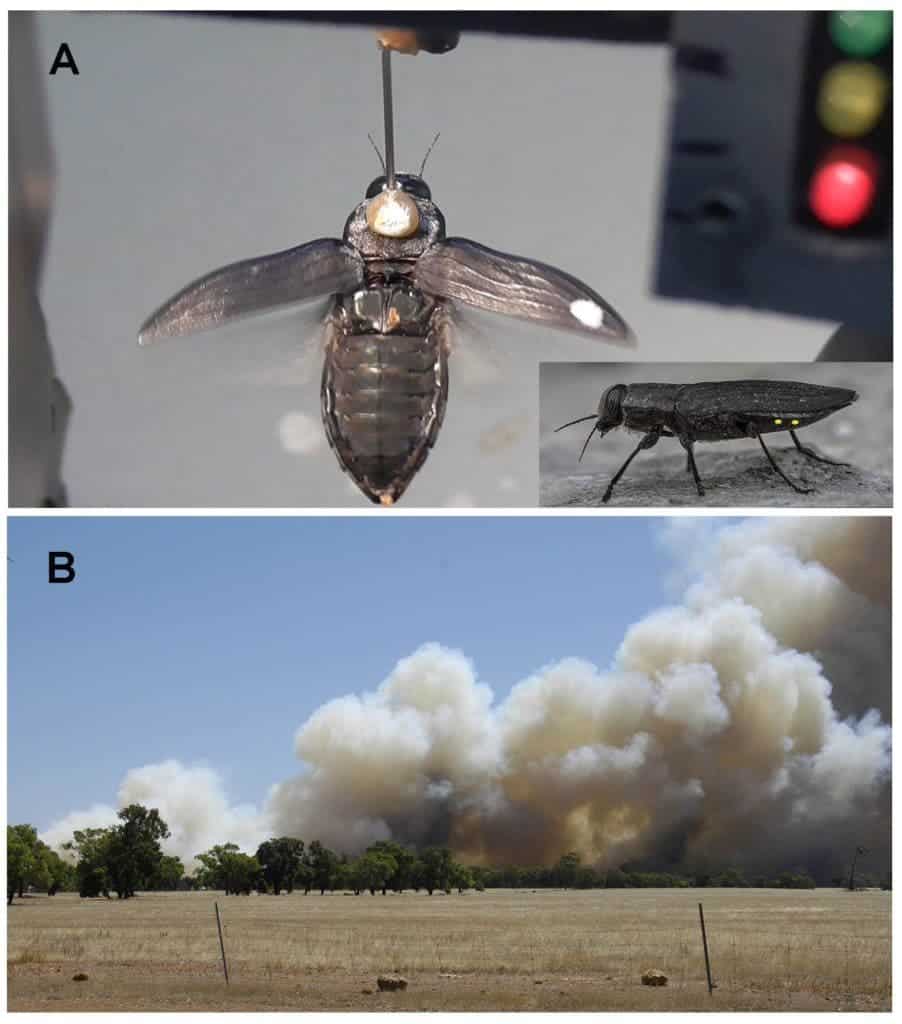The smell of burning wood can be a positive one, churning up images of a warm, crackling fireplace. For the Australian fire beetle (Merimna atrata), burnt wood is alluring, but for different reasons. They deposit their eggs on the wood, because it contains a lot of food for its developing larvae. Researchers tested how the beetles can detect the fires and heat.
As an unusual propensity, the fire beetles have heat sensors that detect infrared radiation. They can see a heat map of an area and theoretically use it to find a freshly burned area. However, it has been discovered recently that their organs are quite insensitive, suggesting that they would not be able to sense heat from a large distance.
German researchers wanted to see how the beetles orient themselves in respect to infrared radiation. They attached the backs of the beetles to a pin that was used to dangle them in the air. They were then unable to fly forward but could turn left or right.
The scientists added weak infrared radiation to the side of the beetles. The beetles did respond, but in the opposite way as expected. They turned away from the radiation rather than towards it.

“Merimna’s IR organs are located on both sides of its abdomen; incidentally, this is unique in the animal kingdom”, explains Dr. Helmut Schmitz, lecturer at the Institute of Zoology at the University of Bonn. “When we occluded the IR receptors with aluminum foil, the animals no longer reacted to the radiation, but always carried on flying straight ahead. As soon as we removed the foil they displayed their original behavior again.”
The organs are evidently not used to find a fire, but to keep away from hot spots in the woods that might fry their eggs.
“Presumably they help the fire beetles avoid hot spots when approaching an oviposition site such as a freshly burnt branch; these hot spots are not visible with the naked eye to humans and animals during the day,” says Schmitz.
But how do the beetles know where to go to lay their eggs? Even though the beetles have good eyesight, they don’t use visual cues to spot a blaze. The researchers showed the beetles pictures of smoke rising from a forest, but the beetles were indifferent and didn’t change their direction.
The next hypothesis is that the beetle smells the smoke. Unfortunately, this theory was not tested so we cannot know for sure if it is true. The beetle, as it turns out, only like a particular type of burnt wood, eucalyptus, which does have a very distinct smell. The next step would be to test the smell of different types of wood burning on the beetles. in contrast, European fire beetles are not picky about the type of wood and actually have extremely sensitive heat sensors that can detect head from a long distance away.
Journal reference: Marcel Hinz, Adrian Klein, Anke Schmitz and Helmut Schmitz: The impact of infrared radiation in flight control in the Australian “firebeetle” Merimna atrata; PLOS ONE; DOI: 10.1371/journal.pone.0192865


